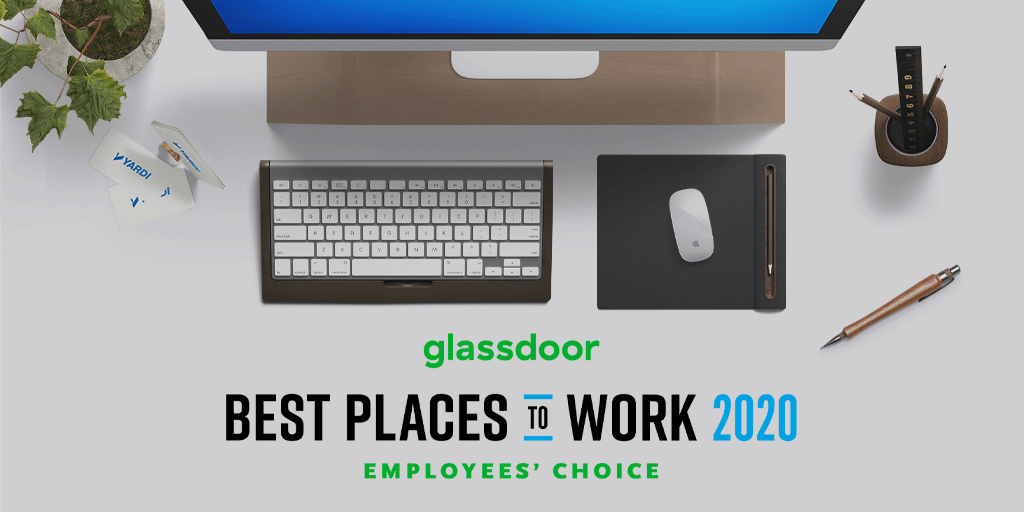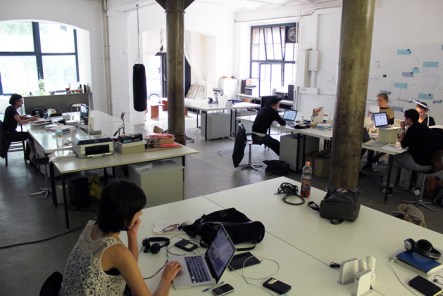“This telework phenomenon has shown people that they don’t have to be in the office all the time,” notes Tim Lomax, research fellow at the Texas A&M Transportation Institute. That realization has prompted many people to rethink options for getting to work – or if it’s necessary at all. Is a physical presence at work necessary, and if so, can commuting be made easier, more pleasant and environmentally conscious? “Tele” might be a permanent prefix for a long time. A survey of Californians released by the University of Southern California in April, for example, reported that more than half of telecommuting workers want to keep working from home at least three days a week after the pandemic ends. Just 18% wanted to go back to in-person work every day, while 31% said they would be happy working from home five days a week. Some businesses, seeing no harm to their profitability from remote work, might allow telecommuting as a full-time option. Looking at it from the employer’s point of view, about 30% of respondents to a poll of more than 300 North American employers by global advisory firm Willis Towers Watson said they expect about 30% of their full-time employees to work from home in three years, up from 5% three years ago. “Lots of [workers] want something in between their Zoom-based present — which has tested work-life boundaries and left many feeling isolated from their colleagues — and a full return to daily commuting that drained our time, energy and wallets,” says Nico Savidge, reporting in the Marin Independent Journal. But Lilac Nachum, a professor of international business at Baruch College, says that knowledge and innovation-based industries have the least to gain from working from home permanently because a significant amount of creativity,...
Yardi Named a Best Place to Work
2020 Glassdoor Award
Yardi has again been honored with a major award from Glassdoor as one of the top places to work in the U.S. The 2020 Glassdoor Employees’ Choice Award relies solely on employee feedback from Glassdoor, a popular job rating and review site. The site enables employees to voluntarily and anonymously share information about their jobs, work environments and companies. Yardi ranks No. 53 on the list of Top 100 U.S. Large Companies list. Below are just a few words employees shared on Glassdoor that contributed toward the award and make us feel incredibly honored: “Yardi is a great company to work for, the company culture is really great and a big factor in my 5-star rating. Yardi genuinely cares about their employees, and employee growth and retention. Though the company is established and stable, the company is still very innovative and is looking at the big, long-term picture.” – Client Services Department employee review. “The management is responsive to employees’ needs professionally and personally. I have been given opportunity to grow in my role and can talk to my boss candidly. My path for growth has been outlined and my manager helps me achieve my goals.” – Accounting Department employee review. “Great place to work. I get to meet new people every day. I love working with clients to see what Yardi software products can make their life better. I look forward to many years at Yardi Systems.” – Sales Team employee review. Glassdoor’s 2020 Best Places to Work list was determined using company reviews shared by U.S.-based employees between October 23, 2018, and October 21, 2019. To be considered for the U.S. large company category, a company must have had at least 1,000 or more employees and have received at least 75 ratings across each of the eight workplace attributes from U.S.-based employees during the period of eligibility. The final list is compiled using Glassdoor’s proprietary algorithm and takes into account quantity, quality and consistency of reviews. “Taking care of team members and offering opportunities to contribute to our clients’ success are guiding principles,” said Anant Yardi, the company’s president and founder. “We are honored to receive this prestigious award from Glassdoor, and we are grateful for the supportive culture that has been fostered at all levels within our organization.” On Glassdoor, current and former employees of companies worldwide can share insights and opinions about their work environments by sharing a company review, designed to capture an authentic inside look at what it’s like to work at particular jobs and companies. “This year marks the shift to a culture-first decade in the workplace, and Glassdoor’s Employees’ Choice Awards winners are employers that are prioritizing culture, mission and employees at the heart of everything they do. By doing so, their employees have spoken and are recognizing them truly as the Best Places to Work in 2020,” said Christian Sutherland-Wong, Glassdoor president, chief operating officer and incoming chief executive officer. “In addition to putting culture and mission at the core of how they operate, this year’s winners stand out for promoting transparency with employees, offering career growth opportunities and providing work driven by impact and purpose.” This year isn’t the first time Yardi has been recognized among the top U.S. companies by Glassdoor. In June 2019, President and Founder Anant Yardi was named for the third time to Glassdoor’s Highest Rated CEO list. That honor was also based on feedback submitted by current and former employees. Of 100 CEOs recognized nationally, Anant Yardi ranked No. 33. Interested in joining our winning team? We are hiring! Find out about current employment opportunities worldwide on the Yardi careers...
Coworking Trends
How Work is Changing
The year 2017 marked the largest growth in coworking, and produced all-time highs in number of spaces as well as number of members. As the industry grows and evolves, what are some of the major Coworking trends to look for in the next year? Here are five trends that will shape the continued expansion of coworking in 2018. Increasing Demand It’s estimated that 50% of the population will be working independently by 2020. If this comes to fruition, the demand for shared space will continue to rise at a fast pace in the next year. According to some estimates, there could be up to 37,000 Coworking spaces worldwide by the end of 2018. Those interested in joining the movement see that Coworking has become a symbol of community, connectivity, efficiency, and networking. Not to mention it’s a cheaper alternative than leasing in a traditional office space. The demand will only continue to increase in 2018. Health Another trend we could see in the coming year is the value placed on health, both mental and physical. Sure, we’ll continue to see the added benefits of some Coworking locations such as workout spaces and yoga classes. But mental health has been brought to the forefront and working from home, or even in some traditional offices, can create isolation, among other negative factors. Today’s society is searching more and more for the positivity of community, a huge benefit of coworking. Larger companies Coworking spaces tend to gear toward small businesses, freelancers, and entrepreneurs. However larger companies have started to pick up on the trend and realized the added value of working in cross-functional teams instead of in more traditional set ups. Not only does working within a coworking space offer corporations a more cost-effective alternative to test new...
Tech at Work
Realcomm Webinar Recap
By 2025, 75 percent of the workforce will be comprised of workers from the Millennial generation. A Thursday webinar hosted by Realcomm: “Technology in the Workplace – Managing the Needs of Multiple Generations” focused on managing that transition successfully and effectively for team members of every generation. Realcomm CEO Jim Young was the moderator. Panelists included: Esther Bonardi, VP of Marketing, Yardi Porschia Parker, Founder, Millennial Performance Institute Shalaya Shipman, Sr. Manager, Operations, SalesForce Kevin Able, President, REALTY|Share Elizabeth Dukes, CMO and Co-Founder, iOffice John Spindler, VP Marketing and Product Management, Zinwave The panelists covered a variety of topics relevant to the escalating generational workforce shift, among them work ideology, preferred methods of recognition, communication platforms and technological expectations. Esther Bonardi, vice president, marketing for Yardi, focused her comments on differentiating the workplace personalities of the Millennials and the Baby Boomers and facilitating constructive communication between the two groups. “I would say to the older generation – reach out and let the younger generation teach you something. Let them know you are willing to learn from them and see what they have to bring to the table. This process starts with the older generation opening up and saying: you mentor me and I’ll mentor you. Let’s teach each other,” Bonardi said. The best way to start such a conversation? Find a neutral subject of interest to both groups, like giving back to the community as a company. “If you’re looking for a place to have these groups where people can exchange information, you might consider corporate social responsibility,” Bonardi suggested. Coming together for the greater good is always a unifying experience that can create professional bonds. Yardi’s workforce in North America is made up of nearly 50 percent Millennial employees, she shared. That has...
Do Not Disturb
Regaining work privacy
Creating an optimal work environment can prove daunting. It’s often impractical – and prohibitively expensive – to provide each employee with their own private domain. On the other hand, the surprisingly popular open office strategy has been shown to negatively impact productivity and morale. So what’s the solution for distracted staff and budget-conscious employers? In a 2014 dispatch for The New Yorker, Maria Konnikova laid out all the negatives of the wall-less workspace in “The Open-Office Trap.” Konnikova begins with a brief history of the open office, which originated in 1950s Germany and has spread to over 70% of offices worldwide. This wide-scale adoption runs counter to mounting evidence open office space increases stress, reduces productivity and leaves personnel feeling resentful and dissatisfied. Much of the adverse effects of an open office can be traced back to the psychological need for privacy and control. In fact, a 2005 study revealed, “the ability to control environment had a significant effect on team cohesion and satisfaction.” Additionally, in a 2011 survey by organizational psychologist Matthew Davis, open offices were found uncontrolled interactions with coworkers created “higher levels of stress, and lower levels of concentration and motivation.” Noise, of course, is yet another drawback of the open office plan. Overhearing phone calls and being subjected to unsolicited comments are just some of the challenges presented by the barrier-free workstation. Konnikova cites several studies indicating noise can result in both physical and psychological symptoms. For example, unwelcome sound adversely influences cognitive function and mental recall, and can even trigger the “fight-or-flight” response. So what’s the solution? Over at Slate, associate editor L.V. Anderson proposes a few simple ways to reign in the chatter and clamor rumbling unabated across desks and workstations. Anderson advises employers take advantage of instant messaging apps...
Myth Busting
MultiGen Workspaces
Yardi client Avison Young recently released “Five generations: Is the need for new workplace structures myth or reality?” The white paper explores the perceived need to overhaul workplace layouts in order to accommodate multi-generational employees. Generations have replaced one another in the workplace since, well, the dawn of the workplace. Yet the introduction of Millennials has employers grasping for new ways to catch and keep the newcomers’ attention without isolating older employees. According to the U.S. Census Bureau, Millennials are the largest generation. Ever. There are currently 83.1 million young adults in the U.S. alone, representing more than one quarter of the nation’s population. The group is a dominate force to be reckoned with. Employers are still learning how to reckon. The first challenge: Millennials are hard to keep on board. The report suggest that Millennial attrition costs are nearly twice that of older workers, “For an organization of 1,000 employees, the additional cost of replacing Millennials could average as much as $300,000 annually.” Stereotypes would suggest that this is because Millennials lack loyalty. Any new carrot could whisk them away to another company. The report reveals the error of this assumption. Jennifer Deal, research scientist with the Center for Creative Leadership, discovered level within the company correlates to loyalty rather than age. The next assumption is that the workplace itself is wrong for Millennials, hence the tendency for employers to create “hip” spaces that should feel more welcoming to Millennials. Organizations are creating lines in the budget for arcades, cafes, sleeping pods, slides,—the list continues. This, too, is a potentially erroneous strategy. How does one measure the ROI of a hoverboard? “Our research shows that when you hold the stereotypes up to the light, they don’t cast much of a shadow,” explains Deal....
Top 10 Best Places
Live Well, Work Happier
U.S. News & World Report recently analyzed 100 of the most populous metropolitan areas to identify the best places to live. Of the results, seven of the top ten U.S. cities are home to Yardi offices. To create the list, analysts compiled data from sources such as the Unites States Census Bureau, the Federal Bureau of Investigation, the Department of Labor and proprietary internal resources. Analysts then scored cities according to five key indexes: Job market, 20 percent Value, 25 percent Quality of Life, 30 percent Desirability, 15 percent Net Migration, 10 percent The weight of each index was determined by public survey. People throughout the U.S. voted to create the hierarchy of desirable features. The resulting list of 100 cities serves as a guide for some of the best-rounded metropolitans in the nation. These cities offer opportunity, quality, and value to residents. We are proud to announce that Yardi has offices in seven of the ten top places to live, indicated in bold. Denver, CO Austin, TX Fayetteville, AR Raleigh/ Durham, NC Colorado Springs, CO Boise, ID Seattle, WA Washington, D.C. San Francisco, CA San Jose, CA Yardi selected these amazing cities as our homes long before they made such top ten lists. And we’re not just saying that to gain cool points. Employee satisfaction and wellbeing are top priorities. We want employees to live well. We don’t simply pull resources and amenities from these top-ranking locales, either. We believe in giving back. Corporate philanthropy is a huge part of who we are and what we do. In addition to sponsoring nonprofits as an organization, we regularly roll up our sleeves to help out on an individual level. If you are looking for a place to call your professional and personal home, Yardi...
Workplace Wellness
Yoga at the Office
Yoga inched its way onto the corporate scene 25 years ago. Within the last decade, the practice has significantly grown in popularity. Forbes, Apple, Google, and several Fortune 500 companies offer yoga classes as part of their wellness programs. Employers continue to tap into the $10 billion per year industry–but is it worth it? The Benefits Before buying yoga mats wholesale, controllers may need hard numbers to determine an onsite wellness plan’s value. A Harvard study estimates that companies can save more than $3 in health care costs for every dollar spent; RAND studies are more conservative with a $1.50 savings. Also worth noting, health care costs increased by 7% nationwide. A subsequent study by Harvard Business Review calculated that average annual health care costs only increased by 1-2% at firms with onsite wellness programs. In addition to health care savings, companies can cut other costs. An article published in the American Journal of Health Promotion reveals additional savings: wellness programs resulted in 25 percent lower costs related to disability insurance, workers’ compensation, and sick leave. Gallup finds a strong correlation between physically active employees, profitability, productivity, and higher sales. Wellness programs are worth their keep. Yoga as a wellness option offers uniquely relevant benefits. Employees that participate in yoga classes report significant improvements to their health and their sense of wellbeing. The Stress Reduction Clinic at the University of Massachusetts Medical Center in Worcester has issued long-term treatment to more than 10,000 patients in its 35-year history. In Mindfulness Based Stress Reduction courses, participants reported lasting decreases in the symptoms of stress, increased energy, and higher self-esteem. Participants also reported an improved ability to handle stress and cope with workplace challenges. Just how much yoga is needed to see the benefits? A report...








